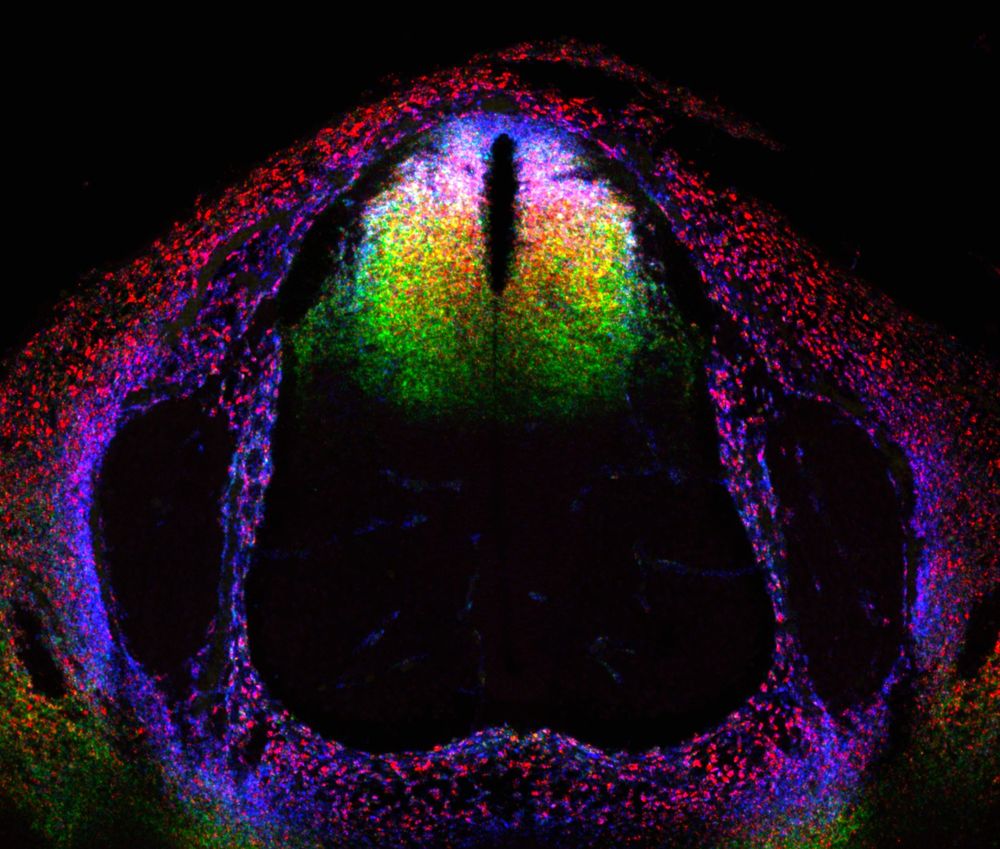R. Brian Roome
@rbrianroome.bsky.social
Research associate, Kania lab, IRCM. Investigating formation and function of spinal cord sensory and ascending circuits. Avid balcony gardener and amateur musician. Views are my own.
Reposted by R. Brian Roome
The BIG DRG paper is now up on @biorxiv-neursci.bsky.social www.biorxiv.org/content/10.1... so many people worked so hard to make this happen. Props to the whole PRECISION Human Pain Network.

A Reference Atlas of the Human Dorsal Root Ganglion
Somatosensory perception largely emerges from diverse peripheral sensory neurons whose cell bodies reside in dorsal root ganglia (DRG). Damage or dysfunction of DRG neurons is a major cause of chronic...
www.biorxiv.org
November 7, 2025 at 11:16 AM
The BIG DRG paper is now up on @biorxiv-neursci.bsky.social www.biorxiv.org/content/10.1... so many people worked so hard to make this happen. Props to the whole PRECISION Human Pain Network.
Reposted by R. Brian Roome
An absolutely lovely paper, if I may say so... Joint effort from @tuanbuilab.bsky.social, Turgay Akay, and the Beatostone lab, aka Rob Brownstone's lab and mine
Do comparator modules exist within spinal circuits? Here, we show that spinal dI3 neurons integrate multimodal sensory feedback, receive direct efference copy from Renshaw cells, and mediate corrections of ongoing movements. Thank you so much to everyone involved!!
www.biorxiv.org/content/10.1...
www.biorxiv.org/content/10.1...

Evidence of spinal cord comparator modules for rapid corrections of movements
Successful movement requires continuous adjustments in response to changes in internal and external environments. To do so, neural circuits continuously compare efference copies of motor commands with sensory input to respond to sensory prediction errors. Some responses need to be very fast and, for limbs, likely occur in as yet undefined spinal cord circuits. Here, we describe spinal circuits involving dI3 neurons, showing that they receive multimodal sensory inputs and direct efferent copies from both Renshaw cells and motor neurons. We further show that they form connections to motor pools, including diverging connections to antagonist motor nuclei. Reducing dI3 neuronal activity diminished stumbling responses, as did disrupting Renshaw cell circuits, providing evidence for a comparator role of dI3 neurons for online corrections. Together, our findings reveal a pivotal role for dI3 neurons functioning as comparators of internal predictions and external sensory feedback to mediate rapid corrections of ongoing movements. ### Competing Interest Statement Robert M. Brownstone is a co-founder and director of Sania Therapeutics Inc. Wellcome Trust, https://ror.org/029chgv08, 221610/Z/20/Z, 227433/Z/23/Z, 225674/Z/22/Z Royal Society, NIF\R1\192316 Canadian Institutes of Health Research, https://ror.org/01gavpb45, PJT 180556, PJT 162357 Biotechnology and Biological Sciences Research Council, BB/S005943/1
www.biorxiv.org
September 2, 2025 at 7:32 PM
An absolutely lovely paper, if I may say so... Joint effort from @tuanbuilab.bsky.social, Turgay Akay, and the Beatostone lab, aka Rob Brownstone's lab and mine
Reposted by R. Brian Roome
A Neural Circuit for Modular Gating of Organ Somatosensation https://www.biorxiv.org/content/10.1101/2025.08.27.672386v1
September 1, 2025 at 3:15 PM
A Neural Circuit for Modular Gating of Organ Somatosensation https://www.biorxiv.org/content/10.1101/2025.08.27.672386v1
Check out my postdoc work at Ariel Levine’s lab, hot and fresh, describing how you build a dorsal horn!
www.biorxiv.org/content/10.1...
www.biorxiv.org/content/10.1...

March 17, 2025 at 4:16 PM
Check out my postdoc work at Ariel Levine’s lab, hot and fresh, describing how you build a dorsal horn!
www.biorxiv.org/content/10.1...
www.biorxiv.org/content/10.1...

